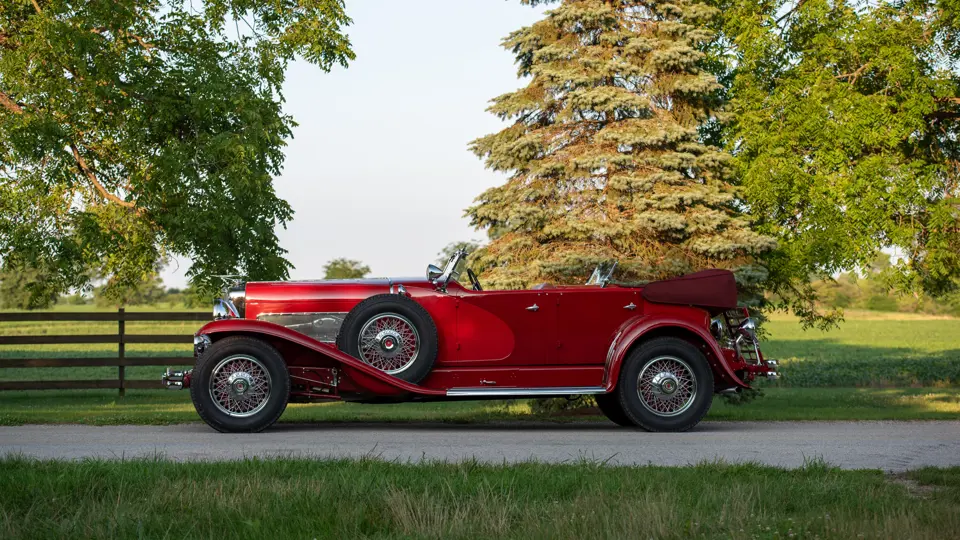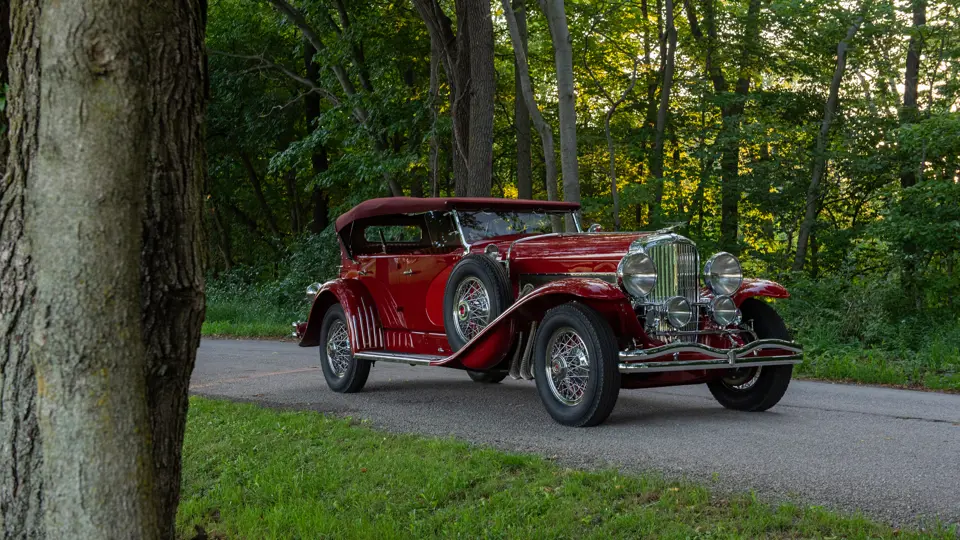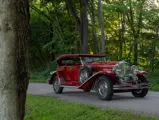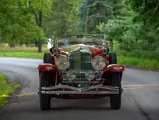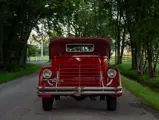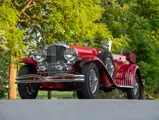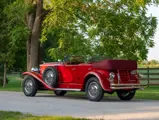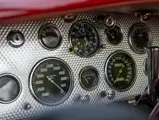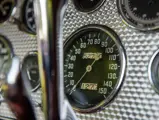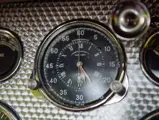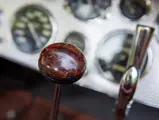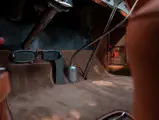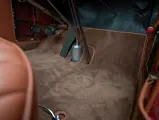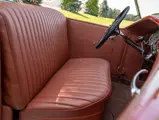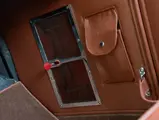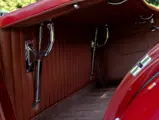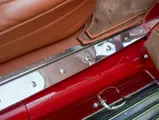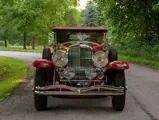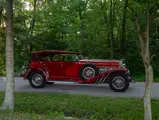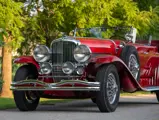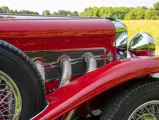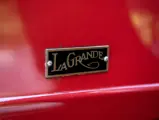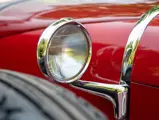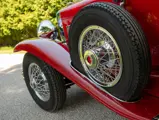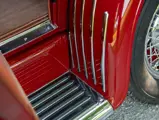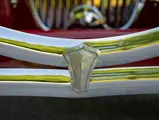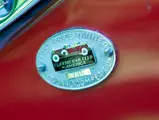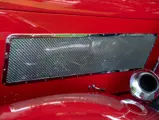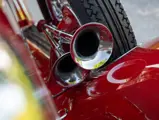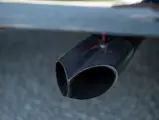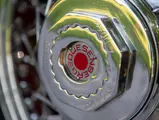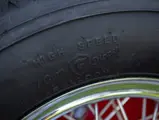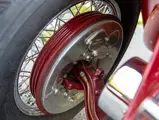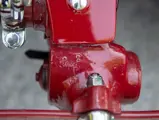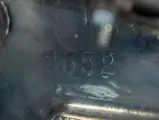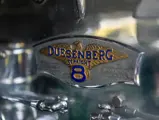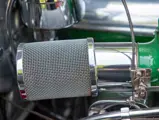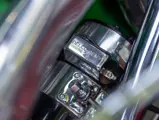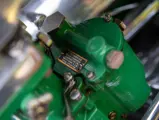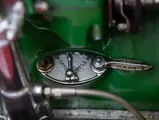
1935 Duesenberg Model SJ 'Sweep Panel' Dual-Cowl Phaeton by LaGrande
{{lr.item.text}}
$3,030,000 USD | Sold
{{bidding.lot.reserveStatusFormatted}}
- One of four LaGrande phaetons on the supercharged 320-hp SJ chassis
- Fascinating history with numerous well-known Duesenberg enthusiasts
- Handsome presentation in highly appealing two-tone red over brown leather; red convertible top
- Extensive mechanical sorting by Brian Joseph’s Classic & Exotic Service
- A Classic Car Club of America (CCCA) Full Classic
THE SUPERCHARGED DUESENBERG
Duesenberg was a pioneer of forced induction on automobiles, having experimented with supercharging on their original Model A in the late 1920s. By 1932 they had developed a blown version of its successor, the grand Model J—known officially as simply the supercharged Model J but, informally and immortally, as the SJ.
The SJ engine incorporated not just the namesake centrifugal supercharger, but also more durable steel connecting rods. In its gentlest state of tune it would produce 320 horsepower, the most from any American production car until the Chrysler “Letter Cars” of the late 1950s. “The supercharger provided higher top speed, improved hill climbing ability, and snappier acceleration,” longtime ACD Automobile Museum archivist and curator Jon Bill noted. “A Model SJ, with its 320-hp, 420-cid double-overhead-camshaft inline eight-cylinder engine, could be throttled down to 3-mph in top gear and accelerate to 100-mph in 20 seconds. Top speeds of 130-mph were not uncommon and 104-mph was attainable in second gear.”
How many engines were built to this hottest specification is one of the great debates of Duesenbergdom. The number of superchargers delivered is not questioned—36—but several of these were installed on more than one car in period, and were mounted not only new from the Duesenberg factory but to nearly-new automobiles by the factory branches in major cities. Nonetheless there are but a handful of Model Js that can be said to have been supercharged in the factory era, and J-523, that offered here, is one such fortunate beast.
DUESENBERG NUMBER J-523
This Duesenberg, engine number J-523 and firewall and short-wheelbase chassis number 2552, was one of 15 Model Js mounted with the “sweep panel” dual-cowl phaeton by LaGrande, and is one of four known to have been fitted with a supercharger. In his frequently cryptic typed notes on Model J histories, Ray Wolff surmises the car may have had a colorful early history, noting it to have had “many owners...among others” Governor George Earle III of Pennsylvania; Ralph De Palma, the retired racing driver who won the 1915 Indianapolis 500; and the well-known early enthusiast, Quentin Kraft of Long Island.
Kraft sold J-523 to R.J. Woods of New York, who had Duesenberg specialist mechanic Marion Roberts restyle it lightly, with a lowered windshield and sculpted front fenders, featuring rounded “notches” cut into their inner edges. Woods then sold the Duesenberg in 1947 and it passed through a number of short-term owners in the Empire State. In the early 1950s it made its way to Chicago and was acquired by another ahead-of-his-time connoisseur of the Model J, George Lamberson. During Mr. Lamberson’s ownership engines were exchanged between two cars that he owned, leaving J-523 with its original bell housing but an unnumbered crank.
Following some years in the Chicago area, in 1961 J-523 joined the expanding Duesenberg fleet of Homer Fitterling in South Bend, Indiana. Mr. Fitterling was one of the first true collectors of Model Js, accumulating them through the 1950s and early 1960s. In his ownership J-523 had the side panels of its hood removed, so that adjustments could be easily made to the engine, and it was driven regularly on the Fitterling property. Its owner was impressed by its reliability, reflected in his statemen to Don Fostle in an article on his 24-car collection in the August 1974 issue of Road & Track magazine. “Fitterling’s comment about the car, made immediately after a 5000-rpm shift into high, was ‘If it were only one we had, it would be good enough.’ And it is.”
Nonetheless, J-523 left the Fitterling collection that same year, when he traded it to L.K. Newell for one of Newell’s namesake custom-built motor coaches—at the time, a value-even exchange. Newell then had the car restored in its present two-tone red livery, with the fenders reshaped using new metal to the correct original design, and rebuilt the engine with new connecting rods. The car subsequently traded through the famed Leo Gephart to Jim Southard of Georgia, who dealt it to prolific collector Richard Slobodien of New Jersey later in 1975.
In 1978, J-523 was sold to James N. Landrum of Dallas, Texas. Mr. Landrum’s success as an oil company owner and investor spawned something of a spending spree in the late 1970s and early 1980s, in which he acquired new examples of the Lamborghini Countach, Ferrari 512 BB, 1976 Cadillac “Last Convertible,” and assorted Corvette Pace Cars, as well as several important vintage automobiles. With the exception of several sports cars in which his son competed, all were accumulated in a building on his property where they remained, unshown, for decades.
J-523 was finally released from the Landrum collection in 2014 and acquired by the current owner. It subsequently underwent a great deal of cosmetic and mechanical sorting in the hands of noted Duesenberg specialist Brian Joseph’s Classic & Exotic Service of Troy, Michigan.
At some point in its early history, likely in the 1940s, the original supercharger had been removed, something not uncommon at the time. Thus J-523’s engine, running very well and already equipped with the desirable steel connecting rods, received a newly manufactured and properly fitted reproduction supercharger, to the original design, with the extremely rare correct single Stromberg UU-3 carburetor—thus finally returning the car to its original specification and performance. The springs were removed, properly straightened, and reinstalled for correct ride height; the axles and brakes rebuilt; and the carburetor rebuilt. In addition, the windshield and top were rebuilt to the original design and height, proper cowl lights were fitted, and correct wiper motors built and installed. The body was refinished, the interior retrimmed entirely down to the carpets, and the top and windshield rebuilt to the original designs, with much of the hardware replated and corrections made to the fit and fitment of trim pieces throughout. All told, improvements to the car total nearly $225,000, all of which is documented by highly detailed invoices in the history file.
An excellent supercharged Duesenberg possessing fine style, rich history, along with the rare and the sought-after SJ specification, this well-loved example should be a rewarding acquisition for any enthusiast of the Mightiest Motor Car, easily representing the pinnacle of most collections.
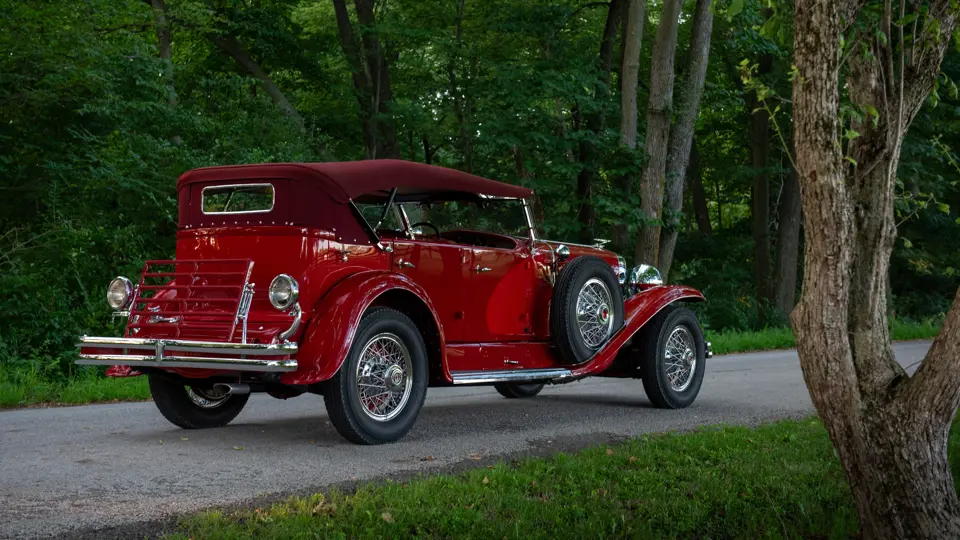

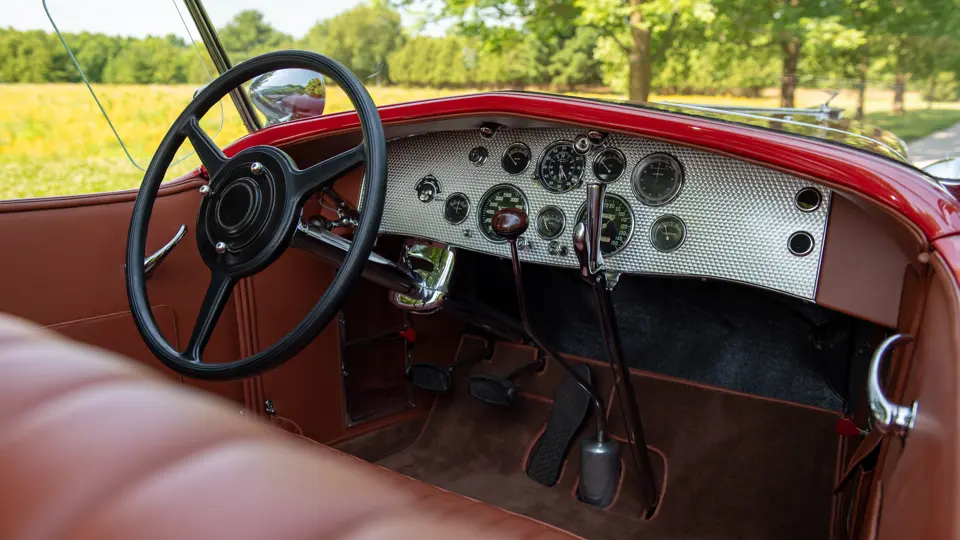



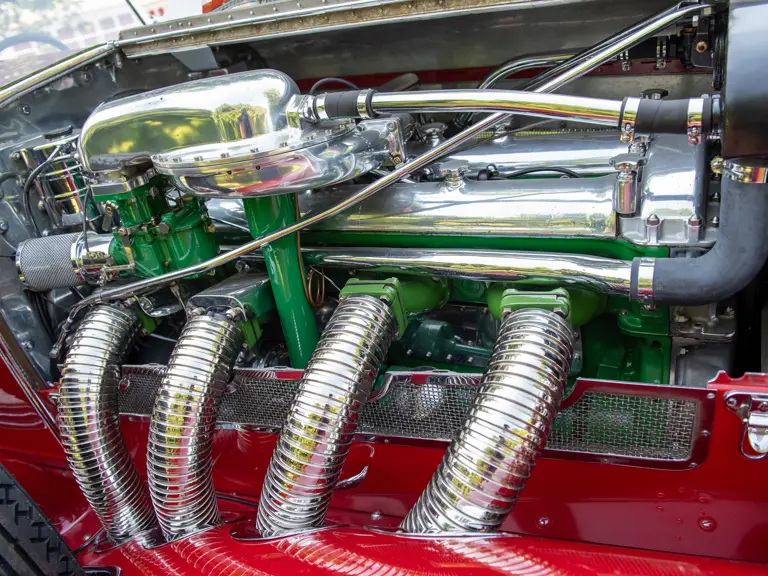
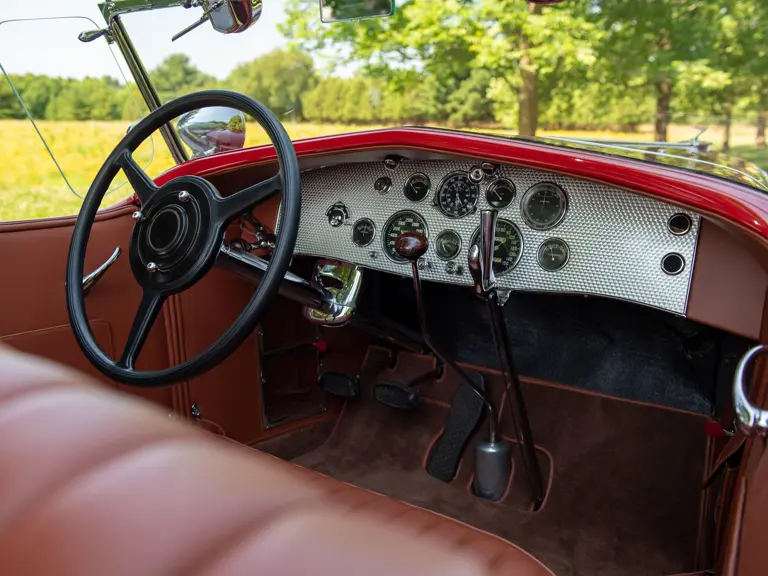

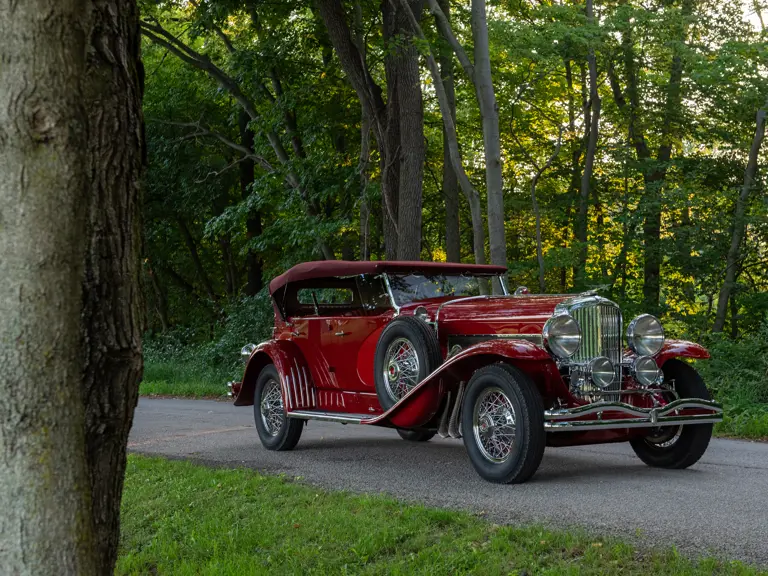

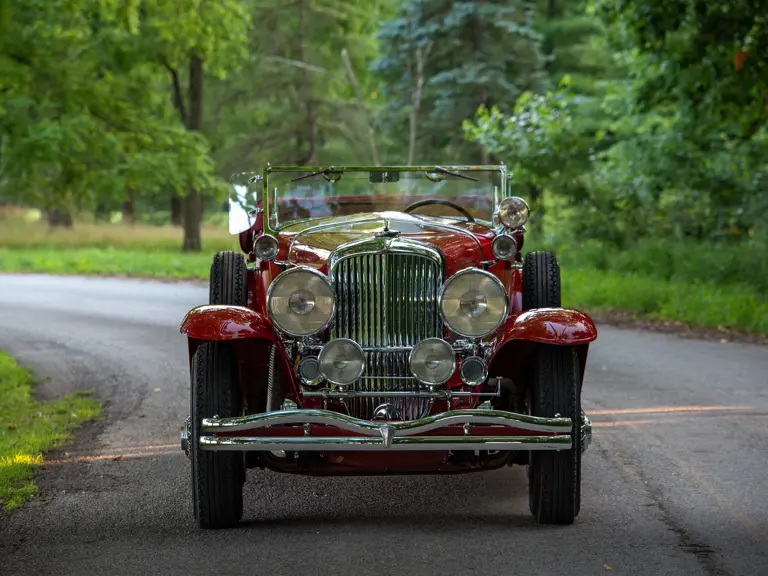

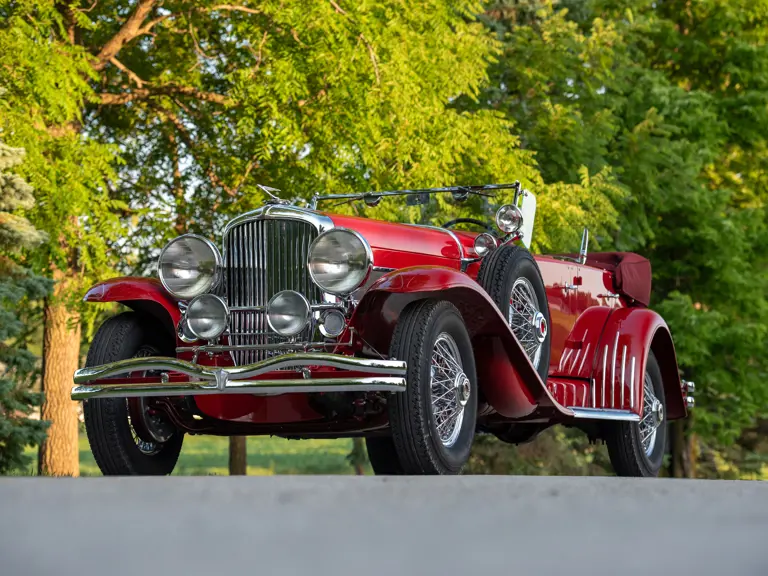

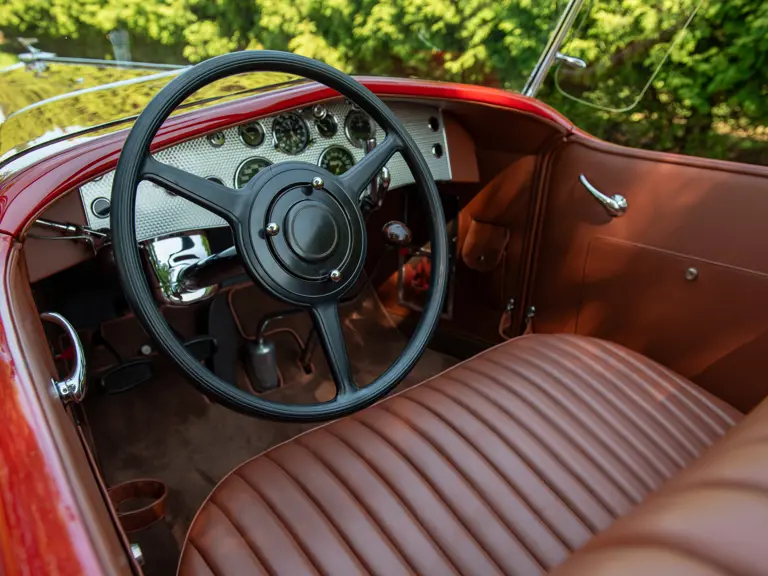
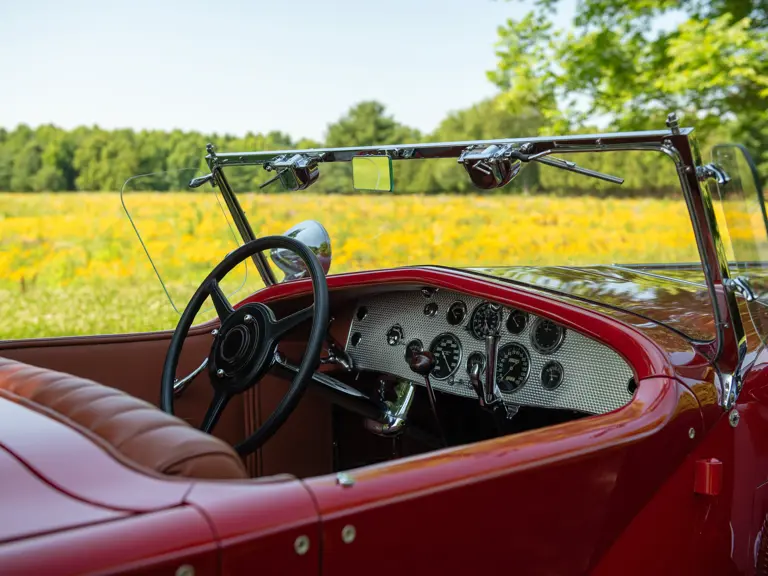

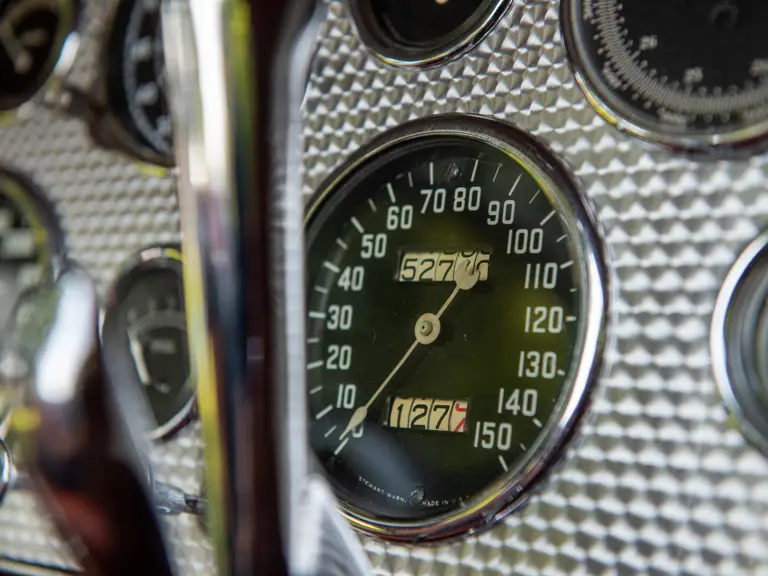


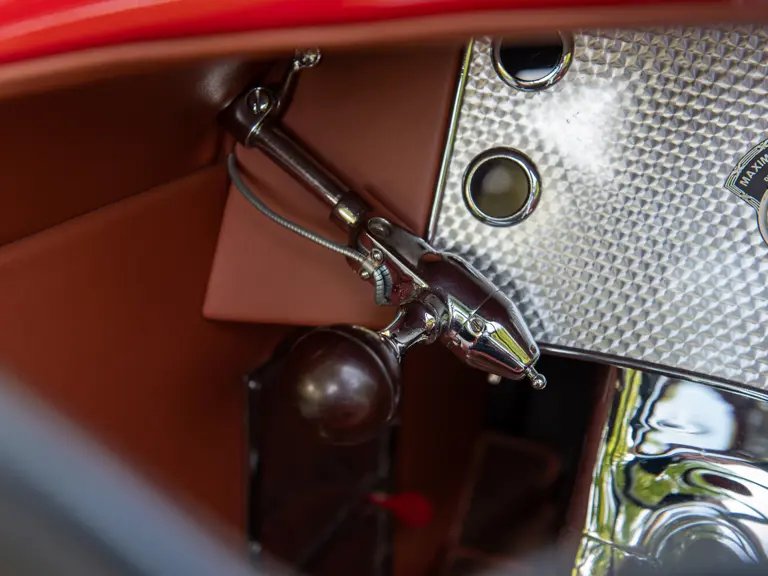
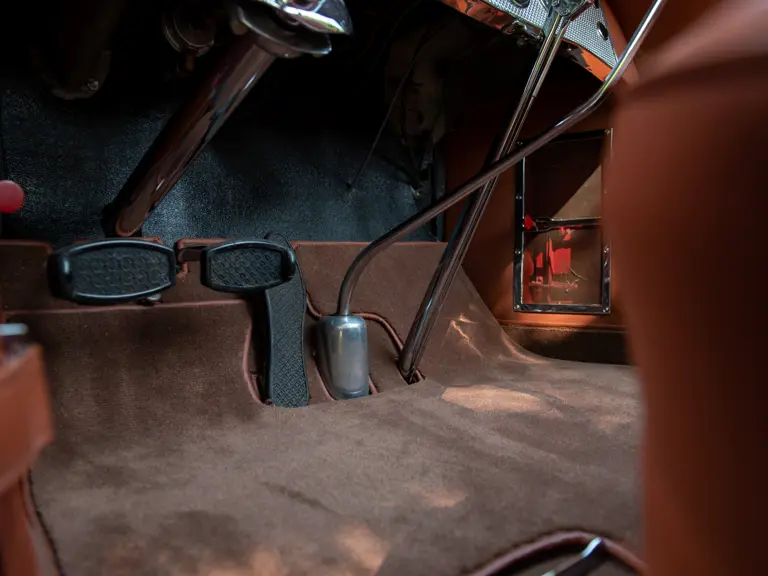
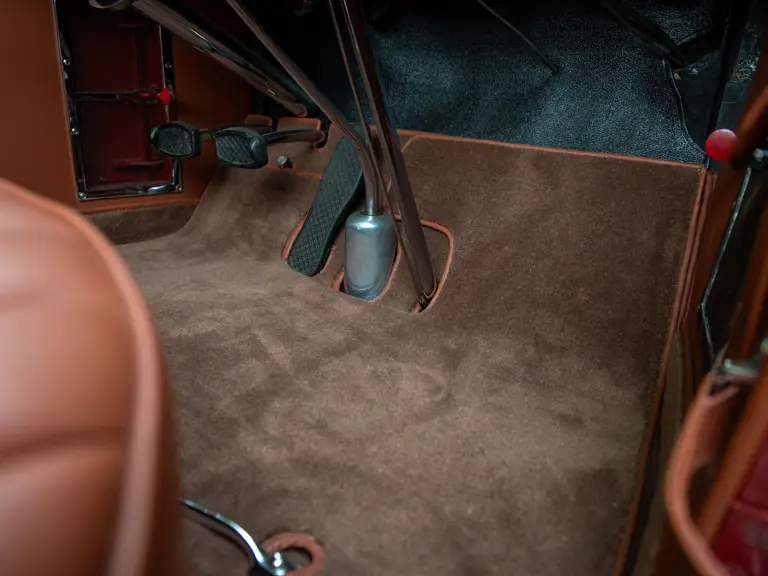
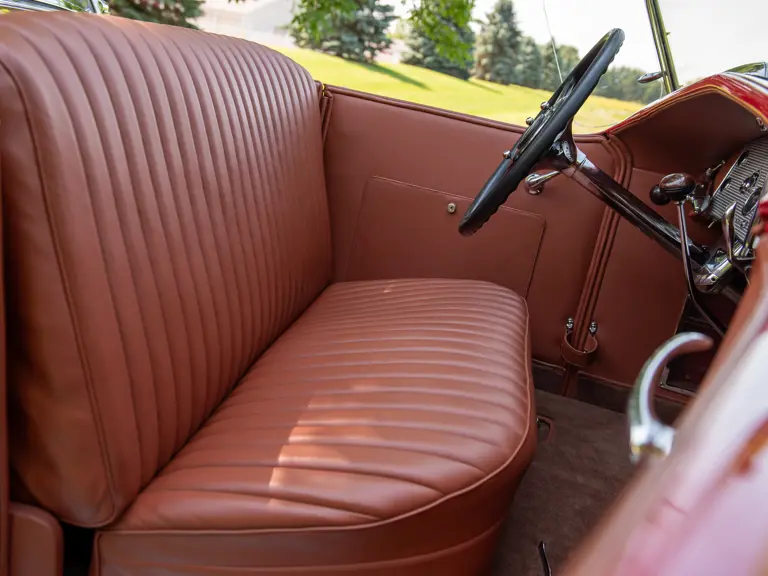
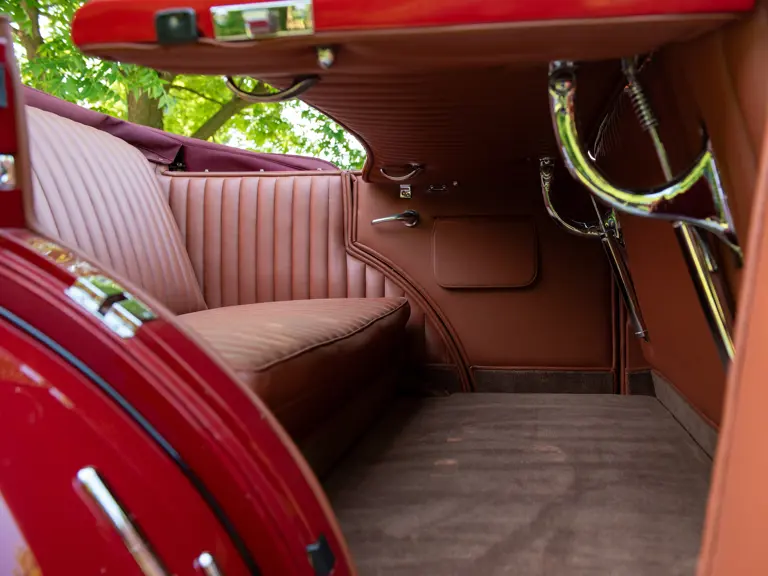


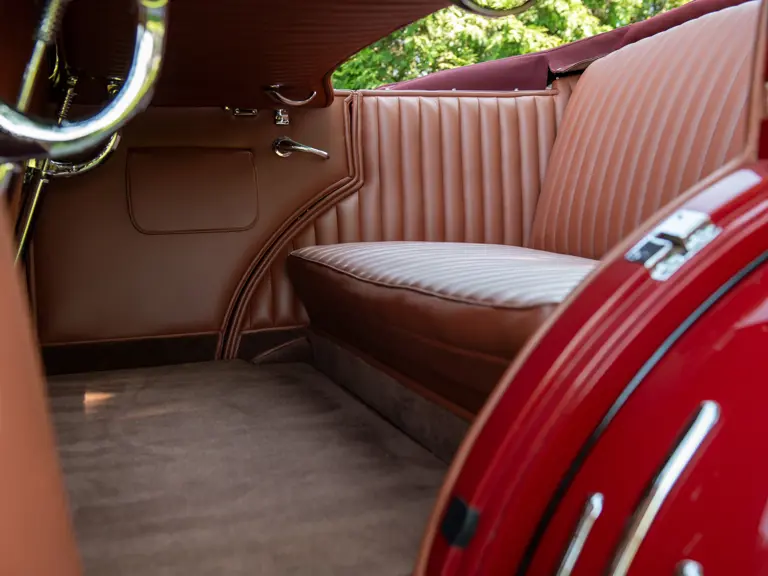


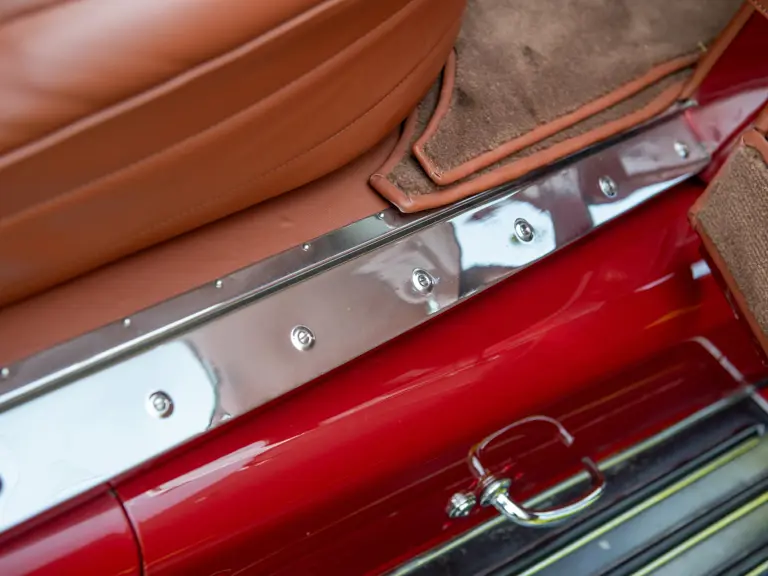

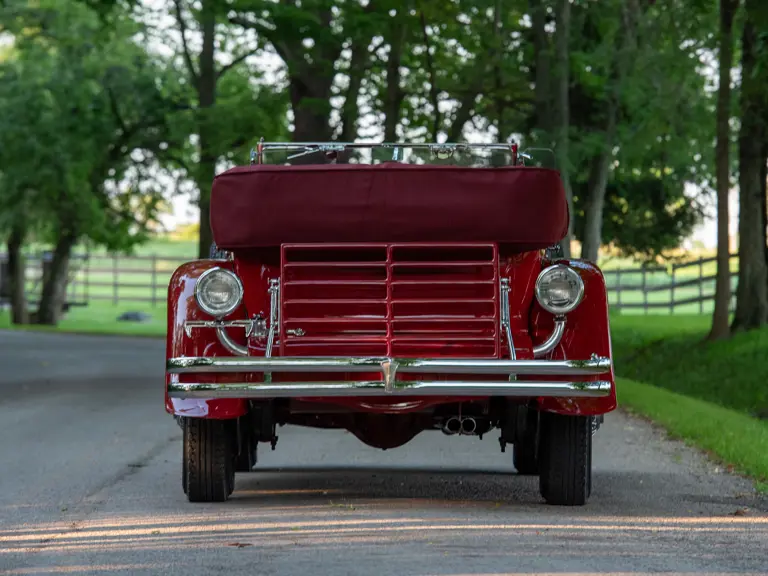
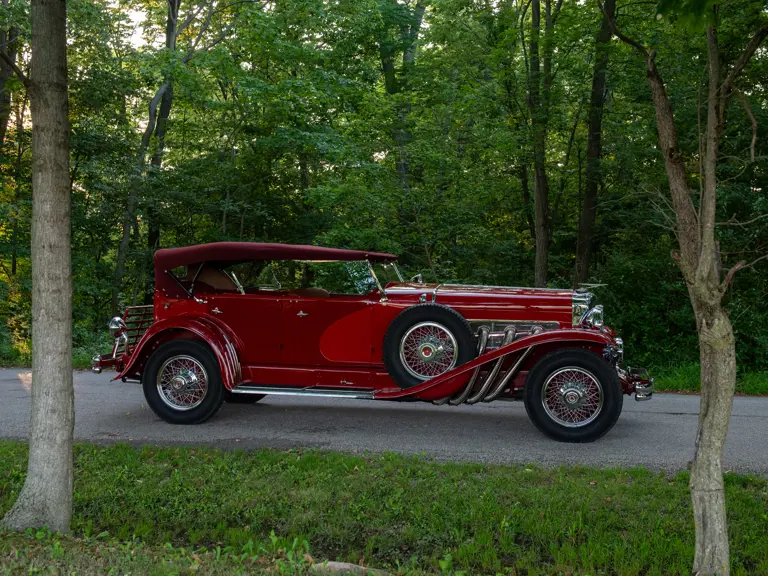

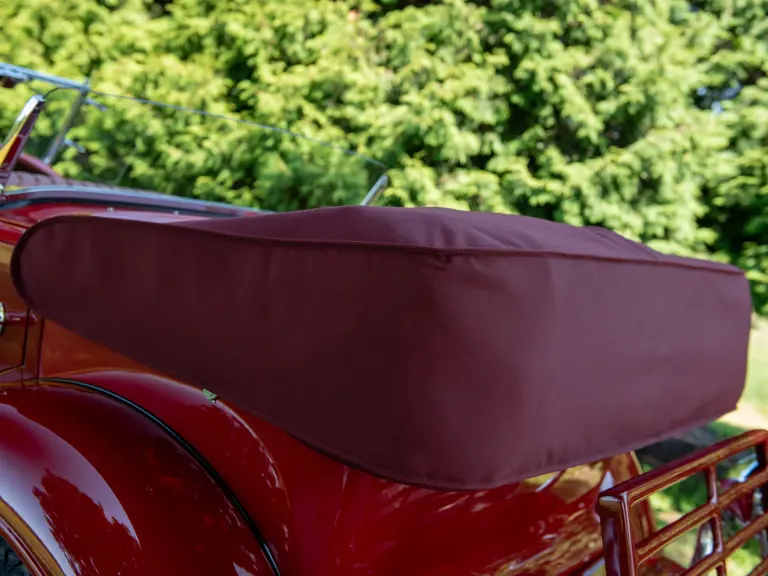
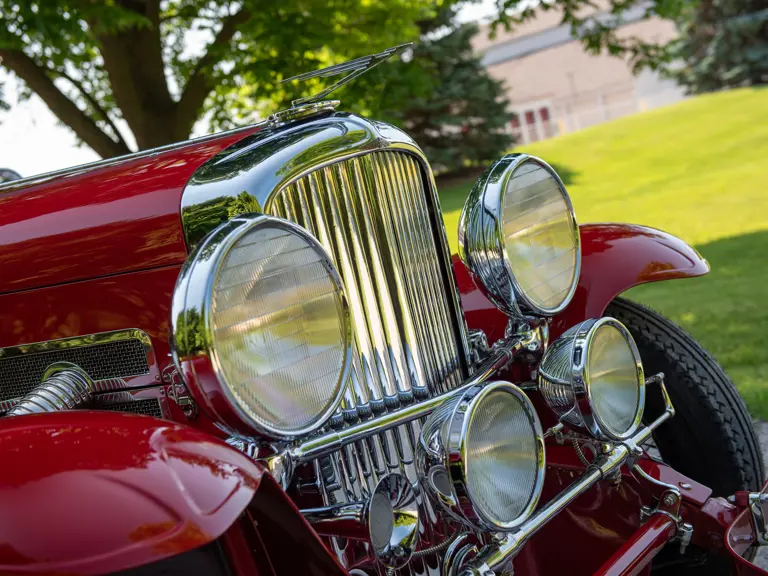
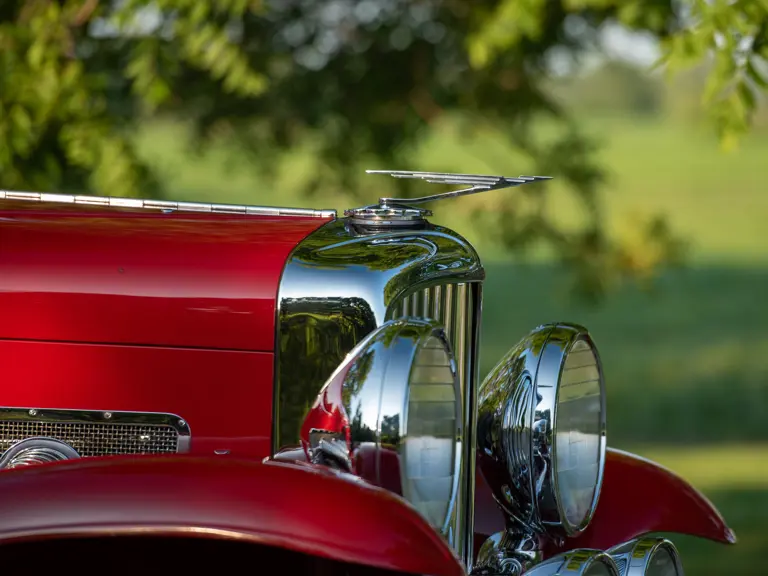
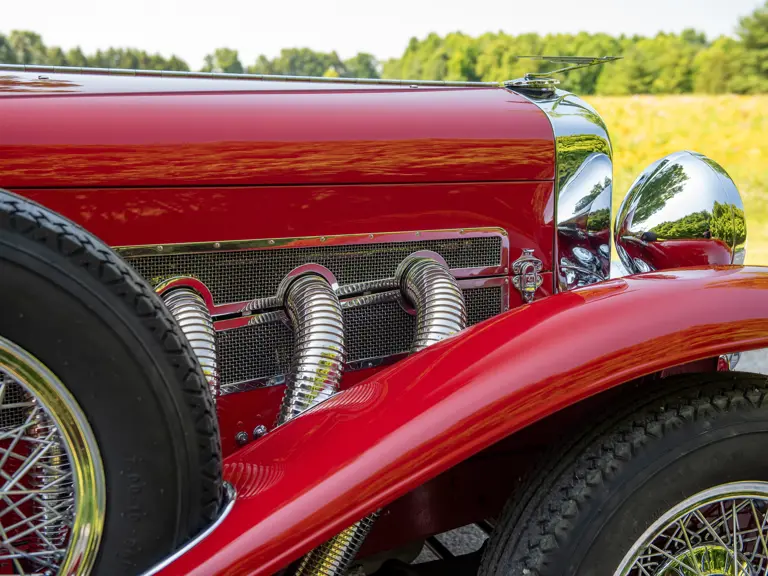


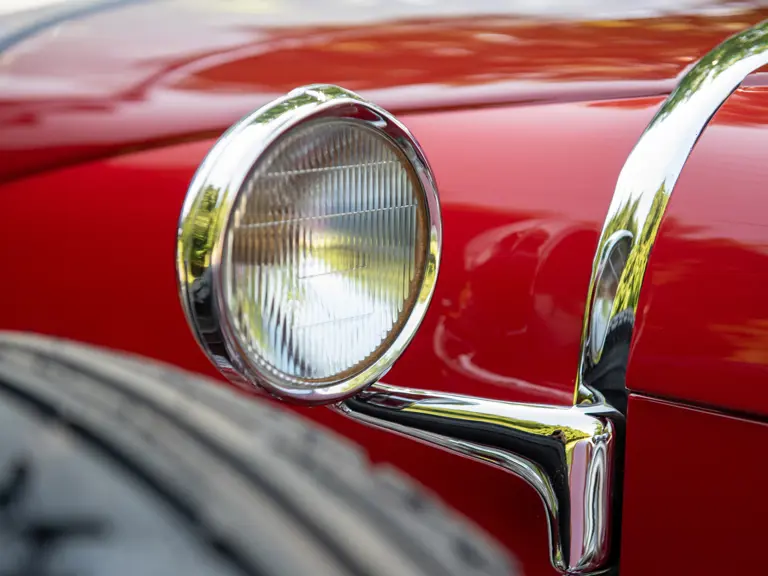



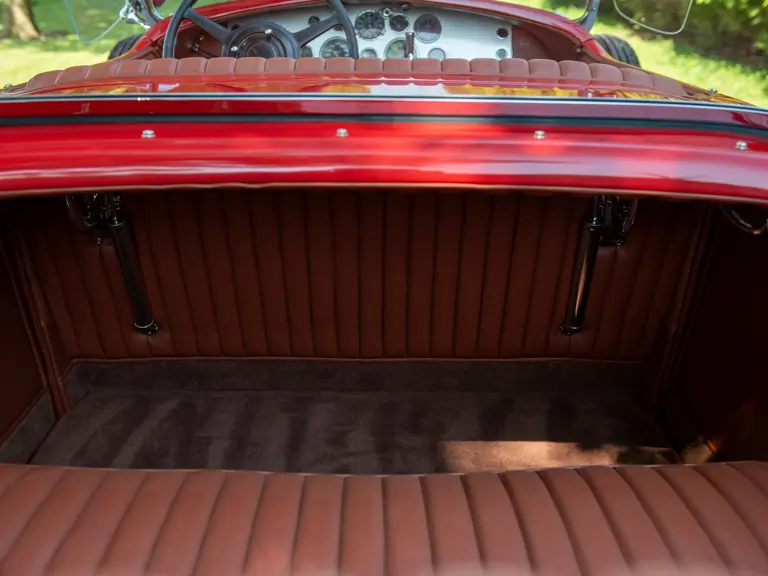
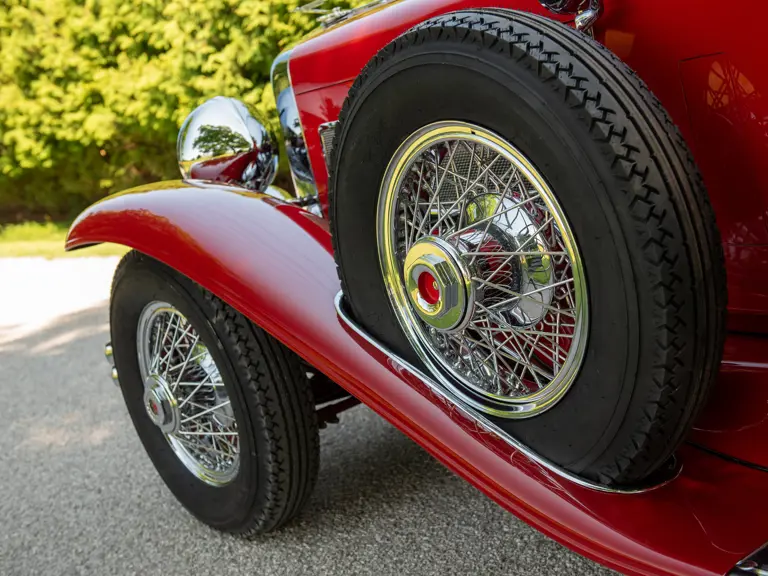
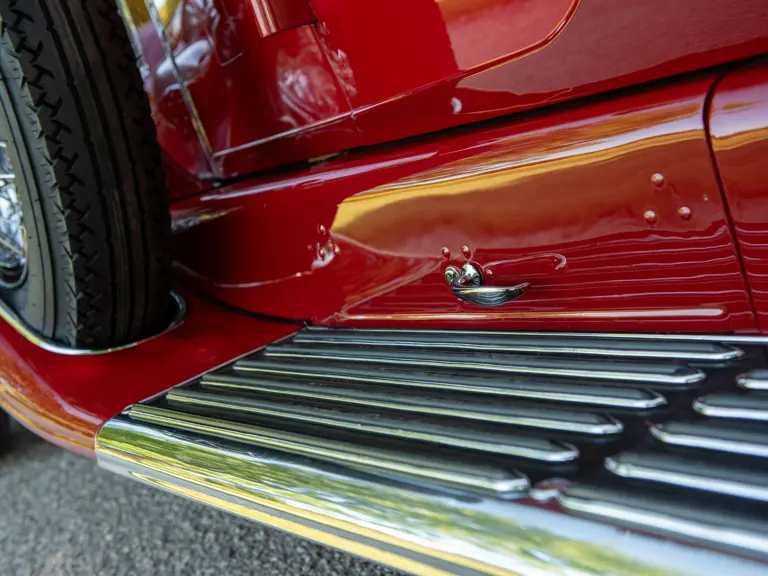
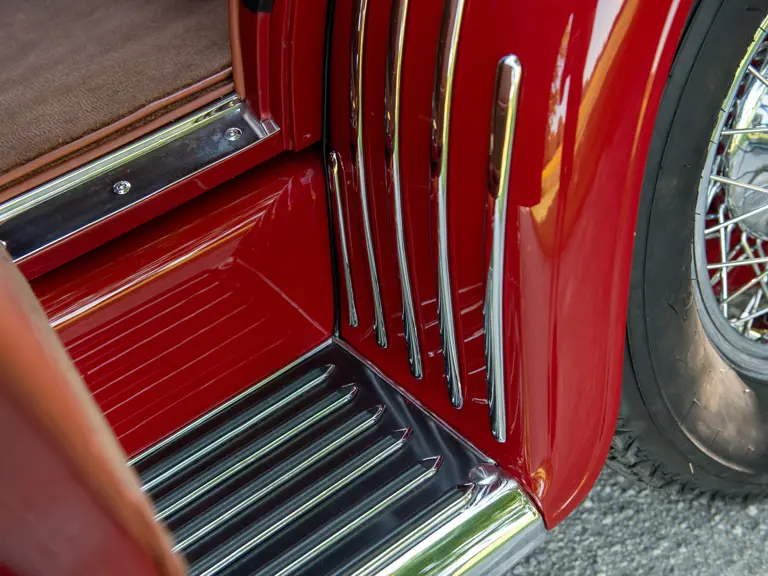


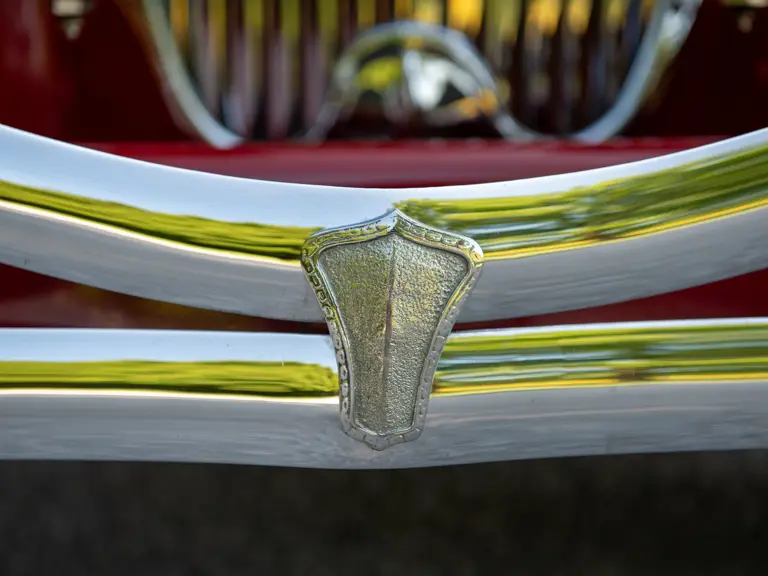



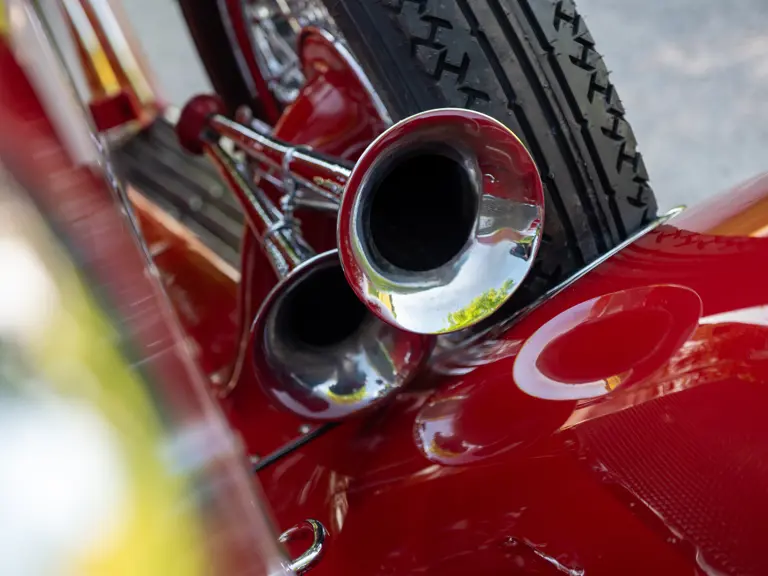


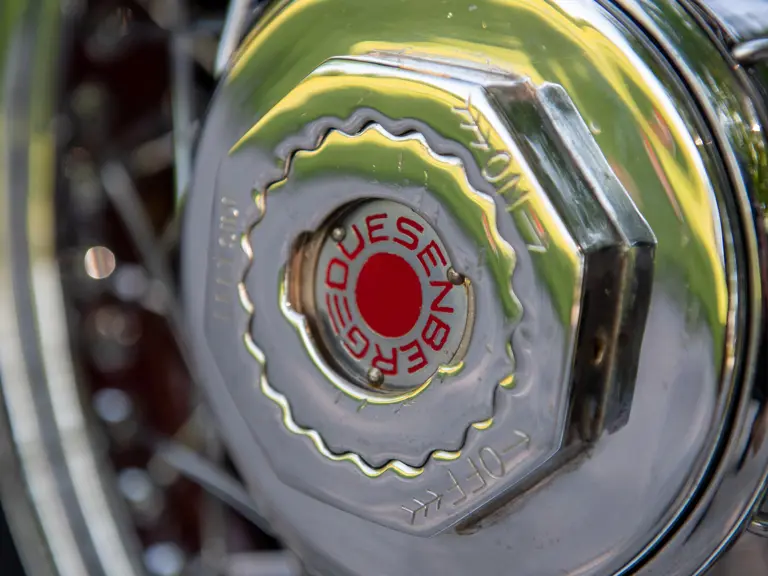
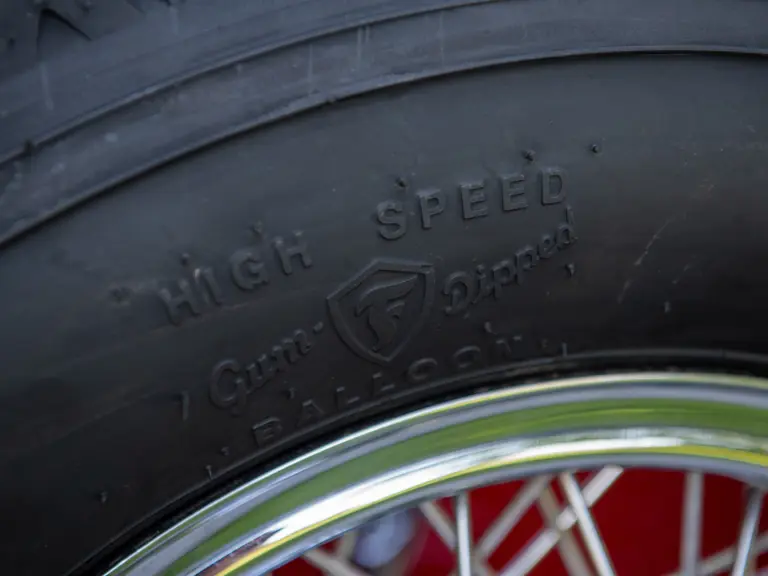

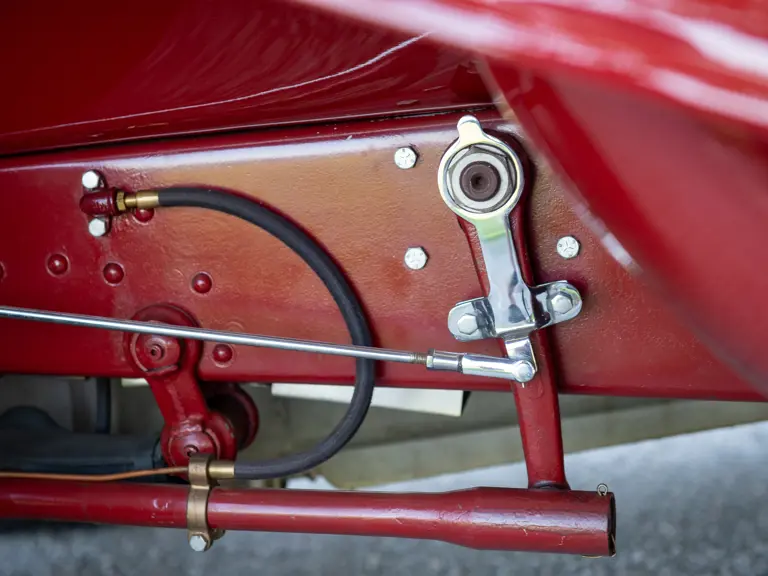


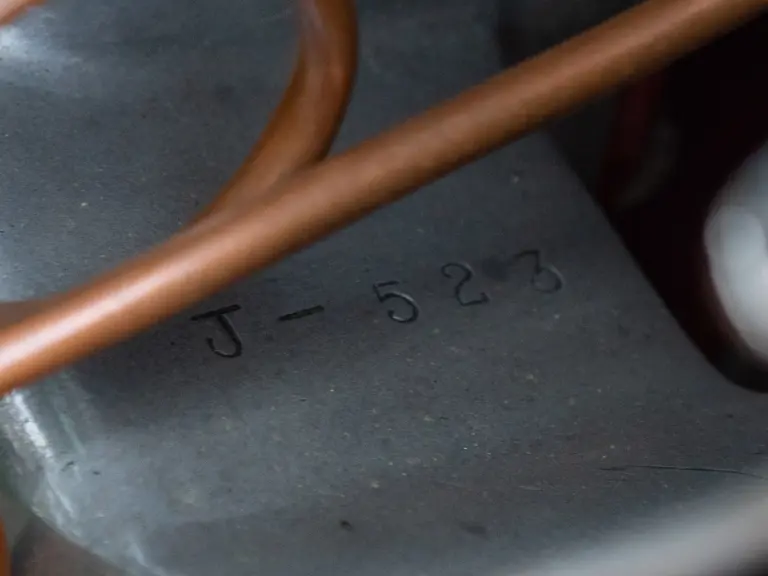

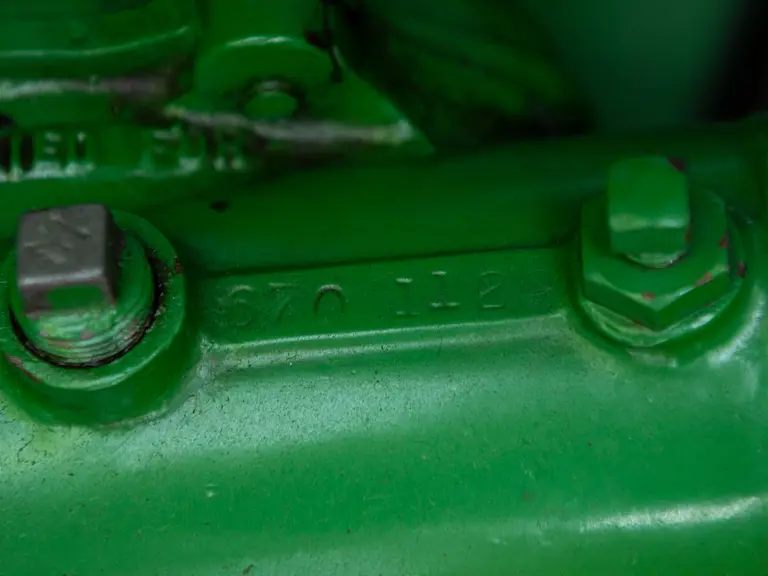
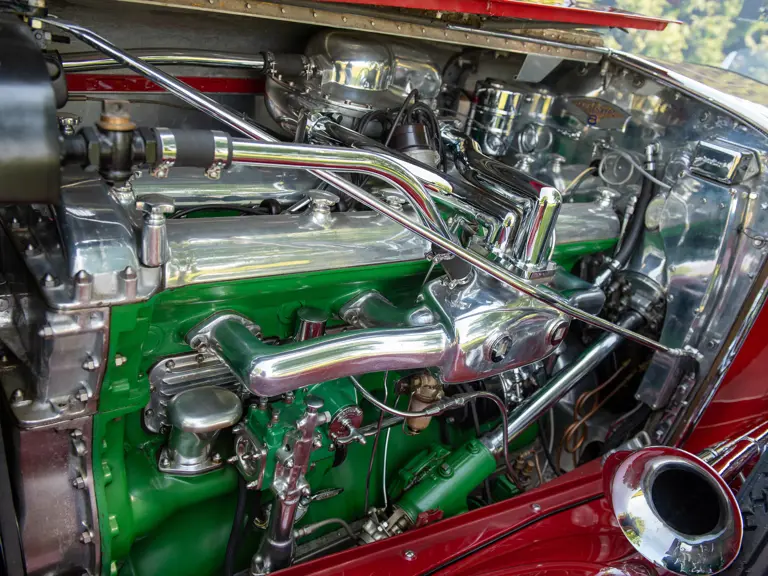

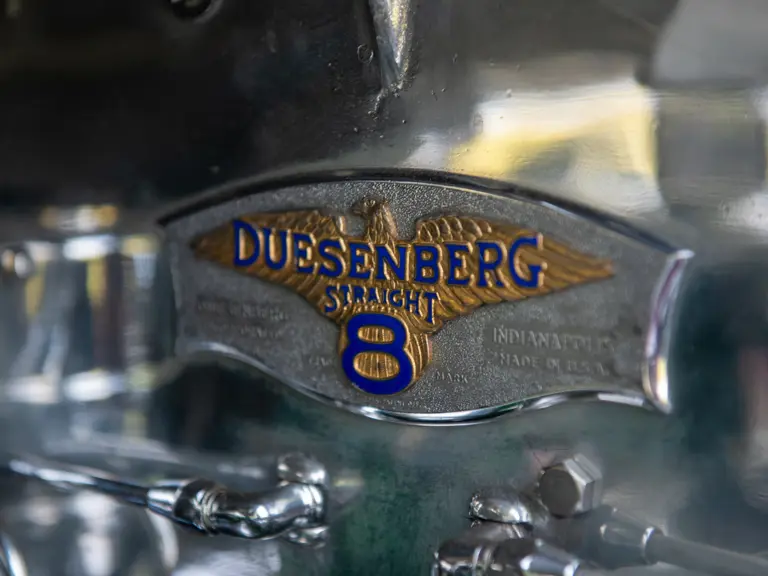

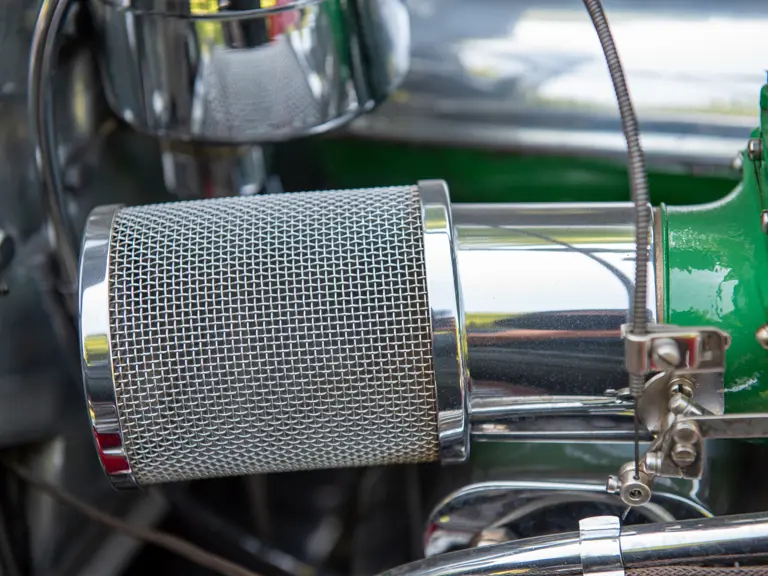
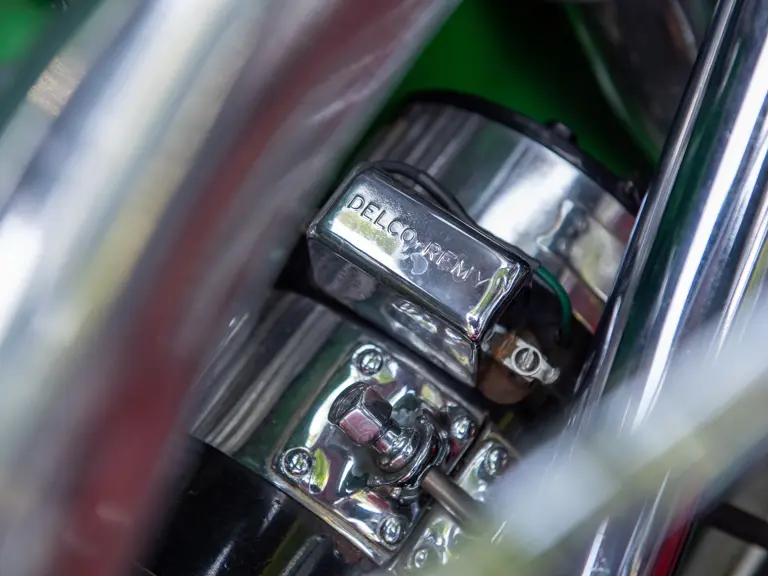


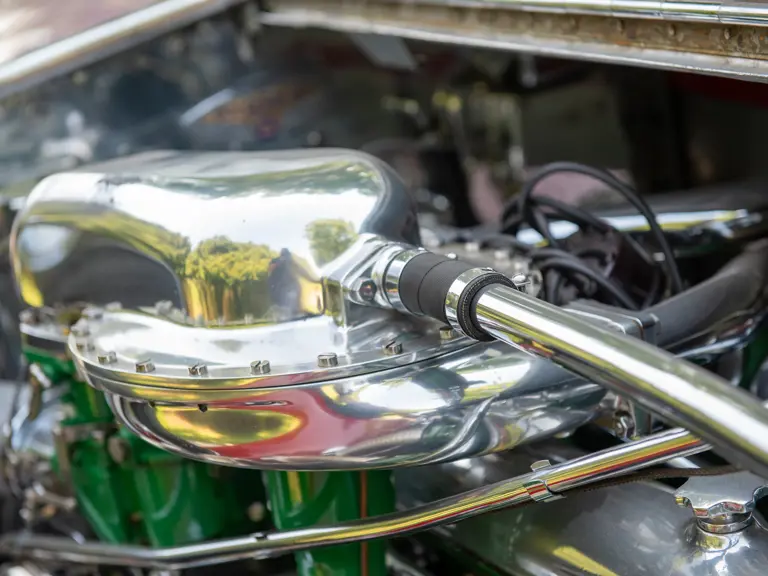


 | Monterey, California
| Monterey, California
